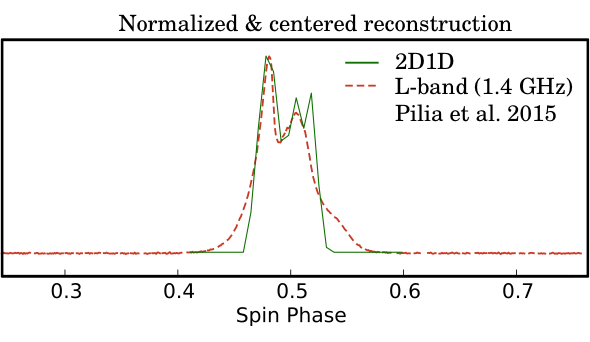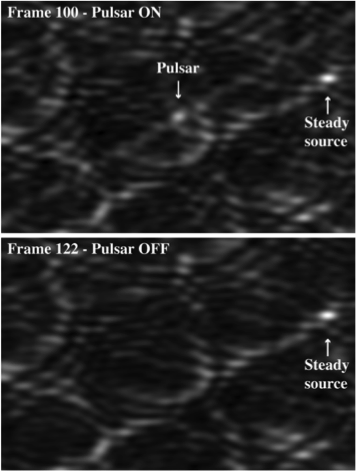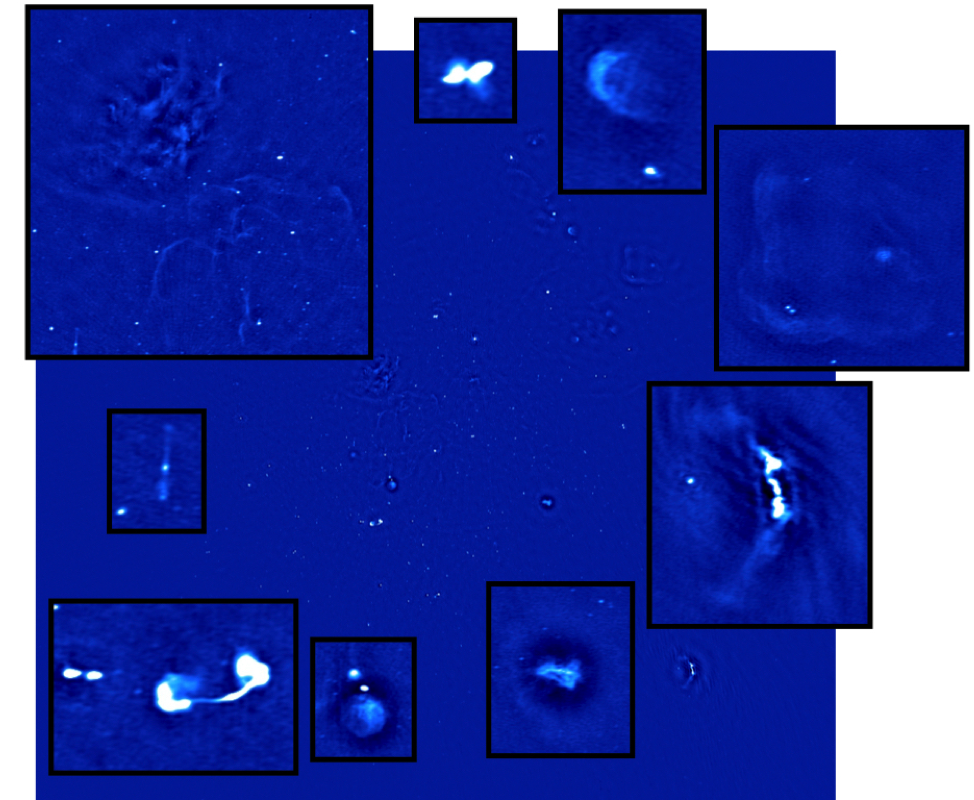F3: The transient catastrophic Universe
> Read the articles connected to the project.
-
The capability to study transient phenomena on time scales from milliseconds to years has recently increased and shown large discovery potential. Yet, the time domain of the sky has been sparsely explored. Fermi and Swift are now showing the way at high energies, the former by mapping the whole sky every 3 hours, the latter by its rapid follow-up across many wavelengths. With the construction of wide field imagers dedicated to sky surveys on a daily timescale in the radio (Lofar, ASKAP, MeerKAT), optical (Pan-STARRS, LSST), infrared (Akari), and X-ray (eRosita/SRG), and with the ongoing surveillance in gamma rays from Fermi, there are new motivations to explore transients. Discovering new classes of fast transients is one, as it could represent new exotic or explosive events out to cosmological distances, such as merging neutron stars or evaporating black holes.
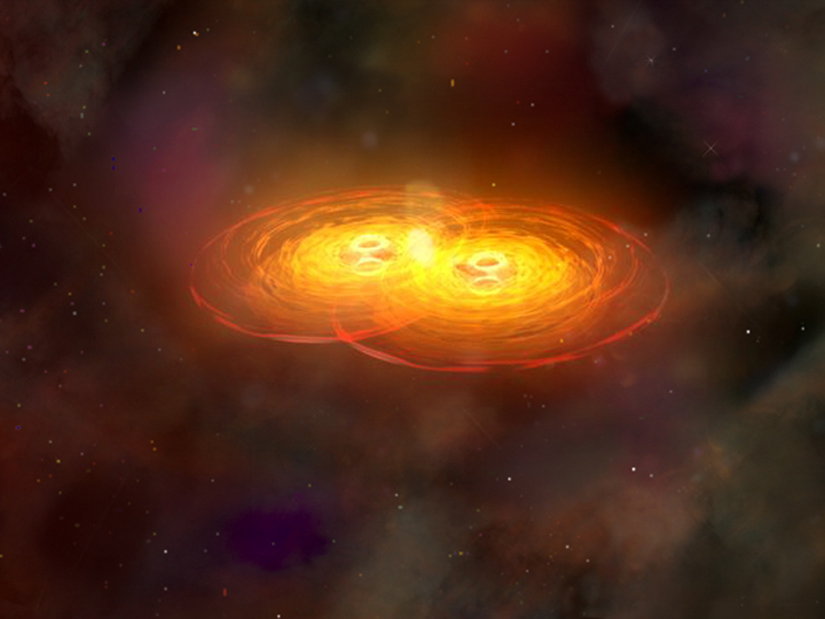
Over the next decade, a combination of increased sensitivity, larger field of view, and algorithmic developments will open up the time domain to a wide range of astronomical fields, from stellar flares and supernovae to neutron-star and black-hole births, quakes and instabilities. Near-coincidence searches with high-energy neutrino and gravitational wave signals will be actively pursued across the world. The dynamic and bursting events represent the new terra incognita.
Radio astronomy is leading this effort. Transient science is identified as a key goal for LOFAR (Europe), ASKAP (Autralia) and MeerKAT (South Africa) that are the precursor instruments of the major international SKA facility to be developed for the 2020+. The synchrotron radio emission probes with unequalled angular resolution the cooling in the ambient magnetic field of the relativistic particles ejected by compact accretors or explosions. It also constrains the kinetic feedback of such events on their environment.
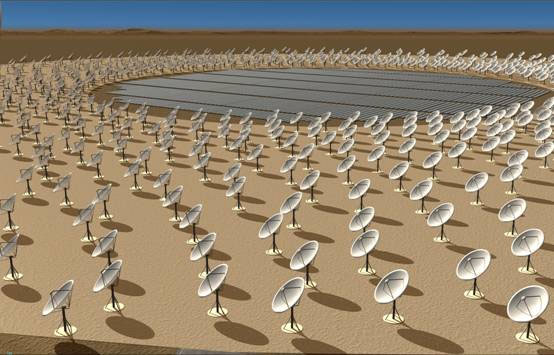
Artistic view of a small part of the SKA kilometer array.
Algorithmic improvements for transient detection would yield improved use of the different combinations of fields-of-view and unprecedented sensitivities offered by these instruments. The vast storage and computational requirements of transient searches, in particular for imaging interferometers, also requires the development of near real-time detection pipelines. The LOFAR project is engaged in the development of first-generation pipelines. The characterization of transients and their identification at other wavelengths represents another challenge.
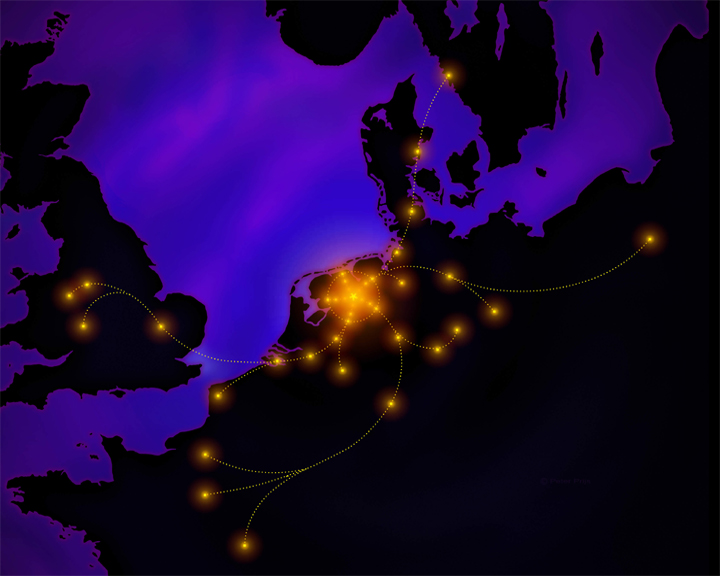
LOFAR is a radio telescope currently being built in The Netherlands and neighboring countries
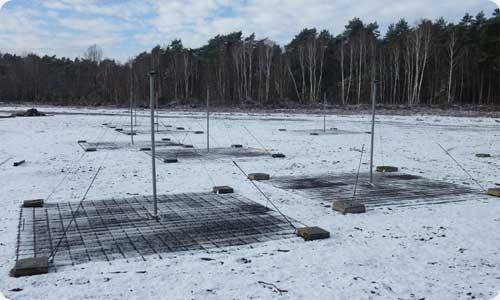
Image from one of the Lofar low frequency station in Nançay (France)
In this context, the Frontier project F3 targets innovative algorithmic improvement of radio software (Compressed Sensing framework and sparse representations, Direction-Dependent Effects,…) along the scientific exploitation of the forthcoming large flow of data originating from this new generation of radio telescopes.
-
POSITION NAME SURNAME LABORATORY NAME GRADE, EMPLOYER WP leader Corbel Stéphane AIM Professor, University Paris Diderot WP co-leader Grenier Isabelle AIM Professor, University Paris Diderot WP co-leader Starck Jean-Luc AIM Researcher/CEA WP member Girard Julien AIM Ass. Prof., University Paris Diderot WP member Migliori Giulia AIM Post-doc, LabEx UnivEarthS (Dec 14-Dec 17) WP member Loh Alan LESIA Post-doc at LESIA/OP (former AIM PhD) WP member Jiang Ming AIM PhD Student (Start Oct 14) WP member Evangelia Tremou AIM Post-doc (Start Nov 17) WP member Floriane Cangemi AIM PhD Student (Start Oct 17) WP member Pires Sandrine AIM Researcher/CEA WP member Bobin Jérôme AIM Researcher/CEA WP member Rodriguez Jérôme AIM Researcher/CEA WP member Francesco Carotenuto AIM New PhD Student (Started Nov 18) WP member Fadi Nammour AIM New PhD Student (Started Oct 18) In collaboration with Cyril Tasse (GEPI, Observatoire de Paris) and the LOFAR (TKP), MeerKAT (ThunderKAT) and ASKAP(VAST) collobarations
-
New and large radio telescopes, that are currently developped and built, will observe the whole radio spectrum with an improved spectral, angular and especially an unprecedented time resolution. They represent a huge technical improvement over the past technologies and a data processing challenge for users that would require comparable performances, similar to what is developped for “big data” problems. At an early stage, the Frontier Project FP3 carried out the development of tools to produce robust 2D radio maps and extended the scope of application to produce two supplementary imagers working on 3D data: one dedicated to transient detection and imaging, the other on hyperspectral radio imaging. On its final stage, FP3’s main aim is to apply these new tools to a wide scope of applications in radio interferometry to generate scientific products and study the associated physical processes (either in time or in frequency).
In July 2018, we entered the SKA era in a practical and effective manner with the beginning of MeerKAT commissionning phase and the inception of the different Large Survey Programs (LSP). As members of the ThunderKAT LSP (The HUNt for Dynamic and Explosive Radio transients with meerKAT), we are deeply involved in the detection of transients in the image plane from MeerKAT Data (See Fender et al. 2017, where SC and JG are co-authors).
Since the beginning of the F3 project, we defined a medium-term plan which consists of understanding new data processing techniques, based on the Compressed Sensing theory and the novelty of using “sparse constraints” on the data reconstruction. In the scope of a collaboration with CEA/Cosmostat, we initiated inovative studies on sparse image reconstruction (Garsden et al. 2014, Girard et al. 2014) which led to two subsequent development for radio image reconstruction of multi-wavelength data (based on Blind source Separation (“DecGMCA” – Jiang et al. 2016, Jiang PhD 2017) and spatio-temporal imaging of radio transients (“2D-1D” – Jiang et al. PhD 2017 and the corresponding paper in revision). The task of merging radio interferometric imaging with the advanced signal processing methods developed in Cosmostat was a clear and fructful demonstration of the crossfertilization between two differents teams. In the meantime, Cosmostat, based on the work done on radio interferometry, also initiated an external collaboration with Neurospin in the scope of the CEA DRF Impulsion project: COSMIC[1]. This project, gathering researchers in cosmology, radio and medical imaging, aimed at developing a cutting-edge coding framework (PYSAP[2]) that can serve as a new developing framework for advanced signal processing methods involving sparsity.
We now entered the last sequence of the project with the application of our designed methods to the “real world” interferometric data. On one hand, MeerKAT, as a precursor of SKA1-MID, already represents a huge technical improvement over the past technologies. Consequently, the deluge of produced data represents a strong data processing challenge for the users and it requires high performance tools, similar to that used in “big data” problems. MeerKAT is now just starting to produce data on known radio transients, that are accessible to us first-hand. Based on our prior knowledge of classical interferometers data (VLA, ATCA, WRST, etc.), we developped a unique expertise in MeerKAT data reduction and we are able to produce clean images down to the µJy level in a wide field of view in a really short exposure time and computation time and good image reconstruction (we are one of the rare teams able to do it and E. Tremou has been asked to chair data reduction sessions in the forthcoming ThunderKAT meeting in December).
On the other hand, another low-frequency radio interferometer, NenuFAR, also entered its commissioning phase. As an improvement to LOFAR in terms of sensitivity, this dense radio telescope in Nançay can play a big role in the detection of fast radio transients at low-frequencies (between 20 and ~80 MHz). As a low-frequency counterpart of MeerKAT, LOFAR and NenuFAR also raise challenges in the detection of fast radio transients in the image plane. As team members are coIs and co-PIs of this experiment, the privileged access to the data serves as perfect test case for the adaptation of our methods to real observations as well as serve as a almost real-time monitoring of the sky for transient studies.
From the early development of tools that produce robust 2D radio maps to cutting-edge methods capable to absorb 3D Data, our aim is now to apply these new tools in a practical manner on the current radio facilities such as LOFAR, NenuFAR and MeerKAT. Frontier Project FP3 can address these challenges in the scientific context of radio transient detection at both high frequencies (~slow transients) and low frequencies (~fast transients).
Algorithmic developments
Our original 2D, 2D1D and DecGMCA algorithms, developped to show case the principle of the methods, were suffering from limitations, primarily associated to their computing time (especially dependent on the size of the image and the number of “channels” cubes to reconstruct). To solve this, 2018 was an important transition year for the project as we reached the limits of numerical experiments and toy models. Indeed, the original testing framework in which the different codes were implemented (in pure python code), was subject to a complete recast in the new accelerated python framework: PYSAP (python, interfaced with C/C++), developped in collaboration with Cosmostat within the COSMIC project. The fundamental building blocks are now recoded and accelerated to the best. This enabled for the adaptation of the critical, time-consuming, blocks to be reimplemented in newer version of the codes.
A new starting PhD, Fadi Nammour (started fall 2018, cosupervised between J. Girard and J.L.Starck), along with people in charge of distributing this accelerated framework, one of the task will be to participate to the reimplementation of our algorithms. In a prospective manner, this PhD will also be oriented in exploring Machine Learning and Deep Learning methods connected to Sparse reconstructions. This is the opportunity to apply ML or DL to the search of transients.
Status of the 2D-1D Algorithm
One of our main scientific goals is to study high-energy catastrophic events and their radio counterpart from the “transient Universe” which acts as an active laboratory of extreme conditions.
For interferometers like LOFAR, NenuFAR or MeerKAT, the accessible range of timescales depends on instrument sensitivity, time resolution, its capability to process data “online” and its capacity to store huge datasets on disks for “offline” transient search. Our method is devoted to detect transients in the image domain, and is therefore meant to be used in a dedicated “online” pipeline or in a post-observation “offline” pipeline. The search is performed in image cubes at rates of few milliseconds rates (ideal for fast transients, such as “Fast Radio Bursts”, at the millisecond scale), or compound images cubes derived from archival data (adapted to slow transients, such as microquasars, at days/weeks scale).
Our 2D-1D “time-agile” reconstruction method, has been validated on point sources from toy models (Jiang PhD 2017, Girard et al. 2018), and present promising results when applied to JVLA data on the unresolved pulsar B0355+54 (collaboration with Casey Law) with promising results (see Figure 1).
Figure 1: (left) Comparison of the reconstructed time profiles in flux with the 2D1D reconstruction methods (green) with the actual observation (red) at 1.4 GHz from the same data (Pilia et al. 2015) (right) Dirty images when the pulsar is respectively ON and OFF.
The 2D1D algorithm is not only able to reconstruct light curves of point source transient, but it is also capable of reconstructing, spatially resolved transients. Application on this kind of source was done using Very Long Baseline Interferometry (VLBI) radio snapshots of V404 Cygni (Collab. J. Miller-Jones), for which the system core is spatially resolved and active at short time scales by displaying ejectas. This constitutes a strong and novel application for a proper temporally -and- spatially resolved reconstruction of the transient. Due to the dificulty of imaging and detecting features in VLBI images (snapshot observation, therefore bad interferometric coverage and a lot of noise and calibration artifacts), our 2D1D algorithms can improve with regard to the the classical frame-by-frame radio imaging. This opens a whole new horizon from the robust timing study of accretion-ejection coupling of the binary system up to monitoring the local radio emission associated to plasma materials travelling in the interplanetary medium (Type III radio imaging of plasma ejection from the sun, to achieve local “space weather”).
Status of the Multi-channel algorithm
Sensitive instruments like MeerKAT, LOFAR and NenuFAR also provide high frequency resolution. When the number of recorded channels is high, classical channel-by-channel or joint deconvolution are no longer tractable method to insure high fidelity recovering of the source. In addition, the various sources in the image (e.g. Figure 2) can have various frequency spectra that ideally needs to be separated into different components. If the image is a set of discret point sources, classical methods enable a robust detection and spectral index measurement. However, when extended emissions and spatial and spectral source “blending” are involved, the problem can be solved with advanced “Blind Source Separation (BSS)” methods to solve for the sources, but also their mixtures. By generalizing previous development work carried on Planck CMB (gMCA, Bobin et al. 2007), Ming Jiang has developed “DecGMCA” (Jiang et al. 2017, Jiang 2017 PhD), an improved method based on gMCA and is able to perform deconvolution. The PhD work performed on the multichannel Blind Source Separation “Sparse Blind-source separation and deconvolution” algorithm (Jiang et al. 2017 and Jiang PhD) or “DecGMCA” has been completed. DecGMCA was applied to real data and show promising results. Further progress can be done by addressing DecGMCA in the new accelerated framework.
Scientific developments
Building up this large effort on the algorithmic side of the project, we are now starting to explore the MeerKAT data (with privileged access, one of the rare team in the world) and also continued pursuing the scientific exploitation of various radio and high energy facilities in order to probe the transient emission from a wide range of astrophysical objects (galactic or extragalactic). The physics of relativistic jets represents a main axis of our research (being frequently associated with transient radio emission). Adopting an observational approach, we aim at understanding how jets are formed, evolve and interact with their environment.
Since the beginning of the postdoc contract in WP F3 late 2017, E. Tremou (ET) joined the ThunderKAT team (The HUNt for Dynamic and Explosive Radio transients with meerKAT) studying astrophysical transients with MeerKAT radio telescope. ET has been reducing, analyzing and reporting on continuum data (L-band, 1.4GHz) of compact objects taken with MeerKAT since the start of its commissioning state (November 2017 ~ 16 antennas). This experience helps us devising future observing strategies within our team in order to efficiently use the 3000 hours that have been allocated to the ThunderKAT team. MeerKAT is now operational in full array (64 antennas) and ThunderKAT has already been taking data almost weekly monitoring 10 transient compact objects. ET has obtained experience with all different target fields and produced high dynamic range images using new radio imaging and calibration tools such as DDFacet (Tasse et al. 2018) and killMS (Tasse et al. 2014; Smirnov et al. 2015). This kind of tools is essential and will help in future facilities (i.e. SKA, ngVLA) for producing high dynamic range images of wide fields taking into account corrections for direction dependent effects. The results obtained are of extremely good quality (see Figure 2) but deconvolution problems are still present, and can be addressed by our deconvolution tools.
ET has also applied a stacking technique in the visibility space of multiple MeerKAT observing epochs of an X-ray binary source (GX 339-4), achieving a detection level during its quiescence state. Future simultaneous deep X-ray (Chandra) and radio (MeerKAT) observations are planned in order to study the black hole fundamental plane in quiescence.
Additionally, ET is the leading member of the CHILES VERDES (COSMOS HI Large Extragalactic Survey Variable & Explosive Radio Dynamic Evolution Survey) collaboration that uses deep VLA continuum observations (~1000 hours) in order to study transient and variable objects (explosions, collisions and disruption events) in the radio sky on a range of time scales (seconds to years). ET has strong experience on rapid searches of new radio transients and variable events in big data sets using the LOFAR transient pipeline (TraP, Swinbank et al. 2015) and SQL tools. These tools help us to extract the desired data and do an analysis on transients almost in real time shortly after our data are taken and reduced by our pipelines (CASA software). Our plan is to get involved and actively contribute in the software development for hunting radio transients with MeerKAT.
ET experience fit perfectly the need of the WP F3 objectives. First years of the project have been dedicated to develop new imaging techniques based on sparse reconstruction in the context of radio interferometry (Garsden et al. 2015). Application to fast transient data was a first step (Jiang et al, PhD, 2017, Girard et al., in revision) toward detection in almost real time. In order to demonstrate the detection efficiency we need:
- To apply these adapted and generic algorithms to modern radio data coming from VLA, ATCA, LOFAR, MeerKAT.
- To confront our method to the classical transient detection pipeline (TRaP, TRaP2) and source finders (PyBDSF and Pyse) located in ASTRON (The Netherlands) for LOFAR and at SKAO (South Africa) for MeerKAT.
Figure 2: Image of the MAXIJ1535 Field at 1284 MHz, field of view of 3.4°x3.4° (8125×8125 pixels, pixel size 1.5 arcsec) produced with DDFacet, 62 antennas,2.3 hour observation, 856 MHz bandwidth. Notice the presence of extended and diffuse emission in addition to the 100+ radio sources (from ET work)
In the effort of understanding how jets of stellar and supermassive black holes are formed, evolve and interact with their environment, we have selected a sample of microquasars with archival, high-resolution radio and X-ray observations. The goal is to employ ad-hoc techniques of image-processing in order to investigate the presence of radio and X-ray jet-related components. Building on the results of the study of the jets of LMXRB XTE J1550-564 (Migliori, Corbel et al. 2017), a new study of the H1743-322 has revealed the emergence of X-ray jets during the 2008 outburst decay. Such emission is fainter and observed at smaller angular scales with respect to the previously detected X-ray jet, suggesting that there may exist a link between the intensity of the outburst and the intensity of the emission of the ejecta (Migliori, Tremou, Corbel et al., submitted). We plan to continue the analysis of the sample (which includes XTE J1650-500, GRO J1650-40, GX 339-4) and we will increase the number of targets by taking profit of the privilege access to MeerKAT observations (as part of the approved time for the ThunderKAT program) and of our approved Chandra program dedicated to X-ray jets of microquasars (recently triggered on MAXI J1820+007 following the detection with MeerKAT of an extended jet interaction with the ISM).
We furthermore illustrate some of our reasearches during the LabEx timeframe with another few examples: 1) the first detection of a jet ejection event in an ultra-luminous X-ray source (Cseh et al. 2015), 2) a LOFAR census of millisecond pulsars (Kondratiev et al. 2016), 3) the LOFAR imaging of Jupiter’s radiation belt (Girard et al. 2016), a close-by case of an extended transient source at low radio frequencies 4) the first imaging with LOFAR of the nebula surrounding the regular transient SS 433 (Broderick et al. 2018), 5) the detection of a flickering jet in the black hole X-ray binary MAXI J1535-571 (Baglio et al. 2018)
6) the detection of correlated optical, X-ray, and gamma-ray extreme flaring activity from the microquasar V404 Cyg (Rodriguez et al. 2016) as well as 7) its first detection at high energy with Fermi/LAT (Loh et al. 2016), the first time for a LMXB GXRBs, 8) the first detection of a low-frequency transient with LOFAR (Stewart et al. 2016), 9) the search for high-energy transient emission of the binary stars DG CVn (Loh et al. 2017), 10) the detection of a low-mass star at low radio frequencies (Coughlan et al. 2017) and 10) the study of the peculiar transient possibly associated with a tidal disruption event (Margutti et al. 2017).
In terms of HR, the LabEx allowed two very different teams to bring their own expertise in this innovative project. In 2016, JG was hired as Ass. Prof. at Univ. Paris Diderot (after a Labex post-doc and a SKA post doc) but is still in collaboration with SKA South Africa. Ming Jiang obtained his PhD in fall 2017 for his work on the 2D-1D algorithm and the DecGMCA algorithm. A new PhD student (Francesco Carotenuto) was hired with SC for the scientific aspect of the project (study of transients and X/Radio correlations). A new PhD student (Faddi Nanmmour) started with JG and JLS for the algorithmic aspect of the project (code refactoring and optimization + new developments).
[1] https://cosmic.cosmostat.org/
[2] https://github.com/CEA-COSMIC/pysap
-
2014:
- Curran, P.A. …Corbel, S. et al. “The evolving polarized jet of black hole candidate Swift J1745−26”, 2014, MNRAS, 437, 3265
- Bassa, C. … Corbel, S. et al. “A state change in the low-mass X-ray binary XSS J12270−4859” 2014, MNRAS, 441, 1825
- Marlowe, H. … Corbel, S. et al. “Spectral state transitions of the Ultraluminous X-ray Source IC 342 X-1”, 2014, MNRAS, 444, 642
- Gallo, E. … Corbel, S. et al. “The radio/X-ray domain of black hole X-ray binaries at the lowest radio luminosities”, 2014, MNRAS, 445, 290
- Cseh, D. …, Corbel, S. et al. “On the radio properties of the intermediate mass black hole ESO 243-49 HLX-1” 2014, MNRAS, 446, 3268
2015:
- Garsden, H., Girard, J., Starck, J.L., Corbel, S. et al. “LOFAR Sparse Image Reconstruction”, 2015, A&A 575, A90.
- Swinbank, J.D., … Garsden, H., Corbel, S. et al. “The LOFAR transients pipeline”, A&C, 2015, 11, 25
- Cseh, D. …, Corbel, S. et al. “The evolution of a jet ejection of the ultraluminous X-ray source Holmberg II X-1”, 2015, MNRAS, 452, 24.
- Rahoui, F, … Corbel, S. et al. “Optical and near-infrared spectroscopy of the black hole Swift J1753.5-0127”, 2015, ApJ, 810, 161.
- Tomsick, J.A., … Corbel, S. et al. “The Accreting Black Hole Swift J1753.5–0127 from Radio to Hard X-Ray”, 2015, ApJ, 808, 85.
- Russell, T. D. … Corbel, S. et al. “Radio monitoring of the hard state jets in the 2011 outburst of MAXI J1836−194”, 2015, MNRAS, 450, 1745.
- Rodriguez, J., … Corbel, S. et al. “Correlated optical, X-ray, and gamma-ray flaring activity seen with INTEGRAL during the 2015 outburst of V404 Cygni”, A&A, 581, L9.
2016:
- Loh,, Corbel, S., Dubus, G., Rodriguez, J., Grenier, I., Hovatta, T., Pearson, T., Readhead, A., Fender, R., Mooley, K. “High-energy gamma-ray observations of the accreting black hole V404 Cygni during its 2015 June outburst”, 2016, MNRAS, 462, L111.
- Carbone, D., ., … Corbel, S. et al. “New methods to constrain the radio transient rate: results from a survey of four fields with LOFAR”, MNRAS, 459, 316.
- Broderick, J.W., … Corbel, S. et al. “Low-radio-frequency eclipses of the redback pulsar J2215+5135 observed in the image plane with LOFAR», 2016, MNRAS, 459, 2681.
- Del Santo, M., … Corbel, S, … Rodriguez, J. et al. “Spectral and timing evolution of the bright failed outburst of the transient black hole Swift J174510.8-262411» 2016, MNRAS, 456, 3585.
- Stewart, A. … Corbel, S. et al. “LOFAR MSSS: detection of a low-frequency radio transient in 400 h of monitoring of the North Celestial Pole» 2016, MNRAS, 456, 2321.
- Marcotte, B. … Corbel, S. et al. “Orbital and superorbital variability of LS I +61 303 at low radio frequencies with GMRT and LOFAR», 2016, MNRAS, 456, 1791.
- Migliori, G., …, Loh, A., Corbel, S. et al. « First Detection in Gamma-Rays of a Young Radio Galaxy: Fermi-LAT Observations of the Compact Symmetric Object PKS 1718-649» 2016, ApJ, 821, 103.
- Rana, V., Loh, A., Corbel, S. et al. “Characterizing X-Ray and Radio Emission in the Black Hole X-Ray Binary V404 Cygni during Quiescence», 2016, ApJ, 821, 103.
- Girard, J., … Corbel, S. et al., “Imaging Jupiter’s radiation belts down to 127 MHz with LOFAR”, 2016, A&A, 587, 3.
- Kondratiev, V.I. … Corbel, S. et al. “A LOFAR Census of Millisecond Pulsars”, 2016, A&A, 585, 128.
- Siemiginowska, A., … Migliori G. et al. “X-Ray properties of the youngest radio sources and their environments”, 2016, ApJ, 823, 57.
- Migliori, G, « The high-energy view of young radio sources: X-ray and gamma-ray observations» 2016, AN, 337, 52.
- Füerst, F. …Corbel, S., … Loh, A. et al. “GRS 1739-278 observed at very low luminosity with XMM-Newton and NuSTAR», 2016, ApJ, 832, 115.
2017:
- Migliori, G., Corbel, S., Tomsick, J. A., Kaaret, P., Fender, R. P., Tzioumis, A. K., Coriat, M., Orosz, J. A. 2017, Mon. Not. R. Astron. Soc. 472, 141, “ Evolving morphology of the large-scale relativistic jets from XTE J1550-564”
- Egron, E. et al. (incluant S. Corbel) 2017, Mon. Not. R. Astron. Soc., 471, 2703, « Single-dish and VLBI observations of Cygnus X-3 during the 2016 giant flare episode”
- Loh, A., Corbel, S., Dubus, G., 2017, Mon. Not. R. Astron. Soc., 467, 4462, « Fermi/LAT detection of a transient gamma-ray flare in the vicinity of the binary star DG CVn »
- Coughlam, C.P. et al. (incluant S. Corbel) 2017, Astrophys. J., 834, 206 « A LOFAR Detection of the Low-mass Young Star T Tau at 149 MHz »
- Margutti, R.… Migliori, G. et al « X-rays from the location of the Double-humped Transient ASASSN-15lh », 2017, ApJ, 836, 25
2018:
- Bassi, T., Migliori, G. et al. « Faint γ-ray sources at low redshift: the radio galaxy IC 1531» 2018, MNRAS, 481, 5236.
- Margutti, R… Migliori, G. et al « Results from the first systematic survey of X-ray emission from Hydrogen-poor Super-luminous SNe » 2018, ApJ, 864, 45.
- Bahramian, A., …, Tremou, E. et al. « The MAVERIC Survey: A Transitional Millisecond Pulsar Candidate in Terzan 5 » 2018, ApJ, 864, 28.
- Broderick, J.W., … Corbel, S. et al. “LOFAR 150-MHz observations of SS 433 and W 50 », 2018, MNRAS, 475, 5360.
- Cendes, Y., …., Corbel, S. et al. “ RFI flagging implications for short-duration transients » 2018, A&C, 23, 103.
- Carbone, D. , Garsden, H. et al. « PySE : Software for Extracting Sources from Radio Images » 2018, A&C., 23, 92.
- Coppejans, D., …, Migliori, G. et al. « Jets in Hydrogen-poor Superluminous Supernovae: Constraints from a Comprehensive Analysis of Radio Observations», 2018, ApJ, 856, 56.
- Molenaar G., Makhathini S., Girard J.N., Smirnov O., “Kliko – the scientific compute container format”, 2018, A&C, 25, 9
- Coogan, R. T., ‚ Tremou, E. et al. “”Merger driven star-formation activity in Cl J1449+0856 at z=1.99 as seen by ALMA and JVLA”, 2018, MNRAS, 479, 703.
Papers submitted or in press:
- Baglio, M.C., …, Corbel, S. et al. “ A wildly flickering jet in the black hole X-ray binary MAXI J1535-571 » 2018, ApJ, in press.
- Peault, M., …, Corbel, S. et al. “Modelling the compact jet in MAXI J1836-194 with disc-driven shocks” 2018, MNRAS, in press.
- Iheanetu, I., Girard J.N. et al. « Primary beam effects of radio astronomy antennas : I. Modelling the Karl G. Jansky Very Large Array (VLA) L-band beam using holography”, 2018, MNRAS, in press.
- Girard, J., Jiang, M., Starck, J.-L., Corbel, S., et al., “Sparse spatio-temporal imaging of radio transients”, 2018, A&A, submitted, in rev.
- Migliori, G., Tremou, E., Corbel, S. et al. « Multi-scale X-ray jets in H1743-322 » 2018, MNRAS, submitted.
- Margutti, R., …, Migliori, G. et al «An embedded X-ray source shines through the aspherical AT2018cow: revealing the inner workings of the most luminous fast-evolving optical transients », 2018, ApJ, submitted.
- D. Nguyen, …, E. Tremou, et al., “Improved dynamical constraints on the masses of the central black holes in nearby low-mass early-type galactic nuclei”, 2018, ApJ, submitted.

